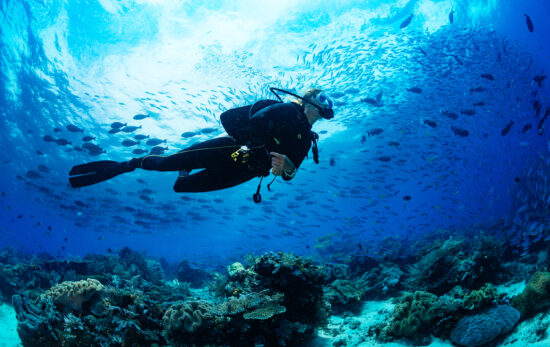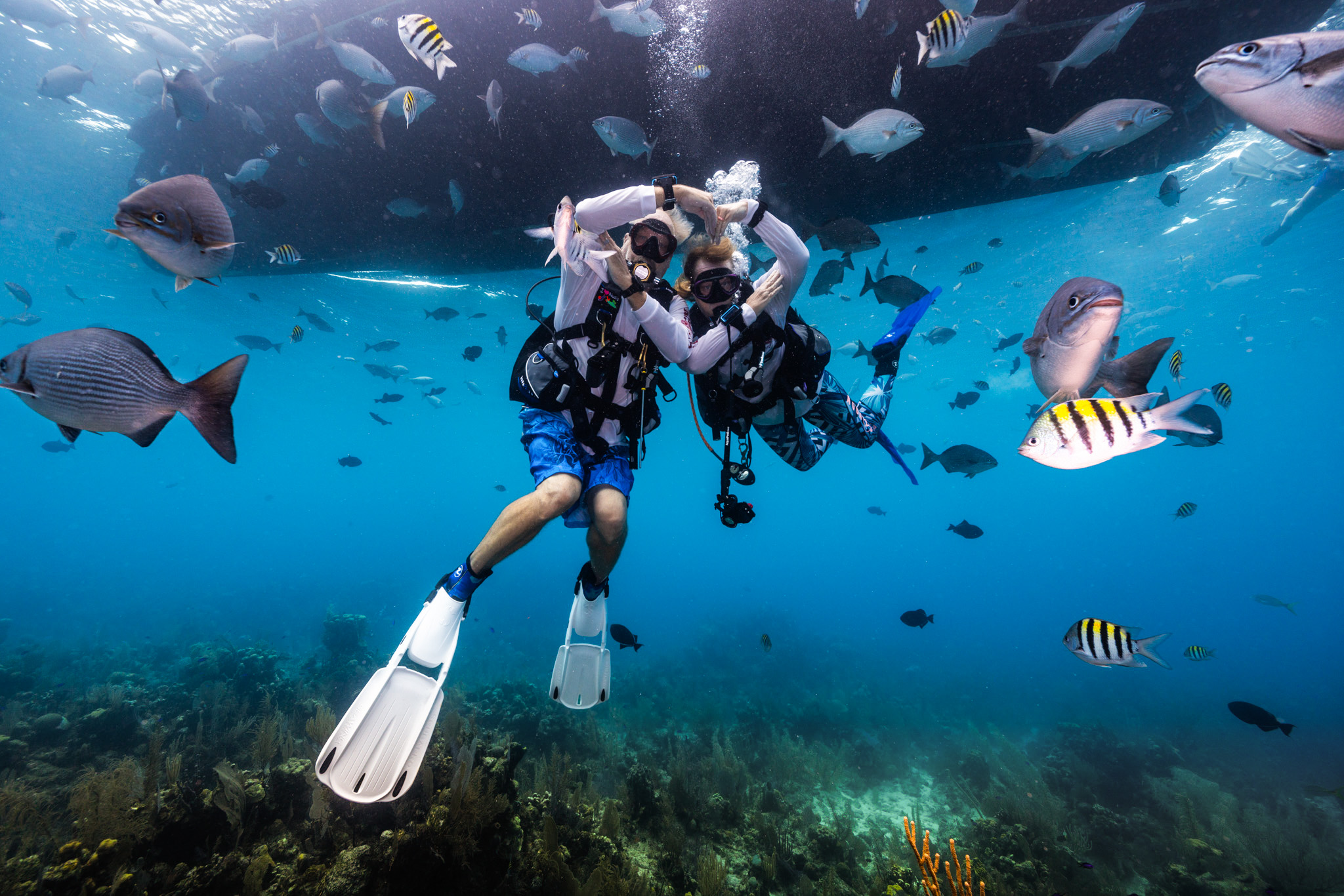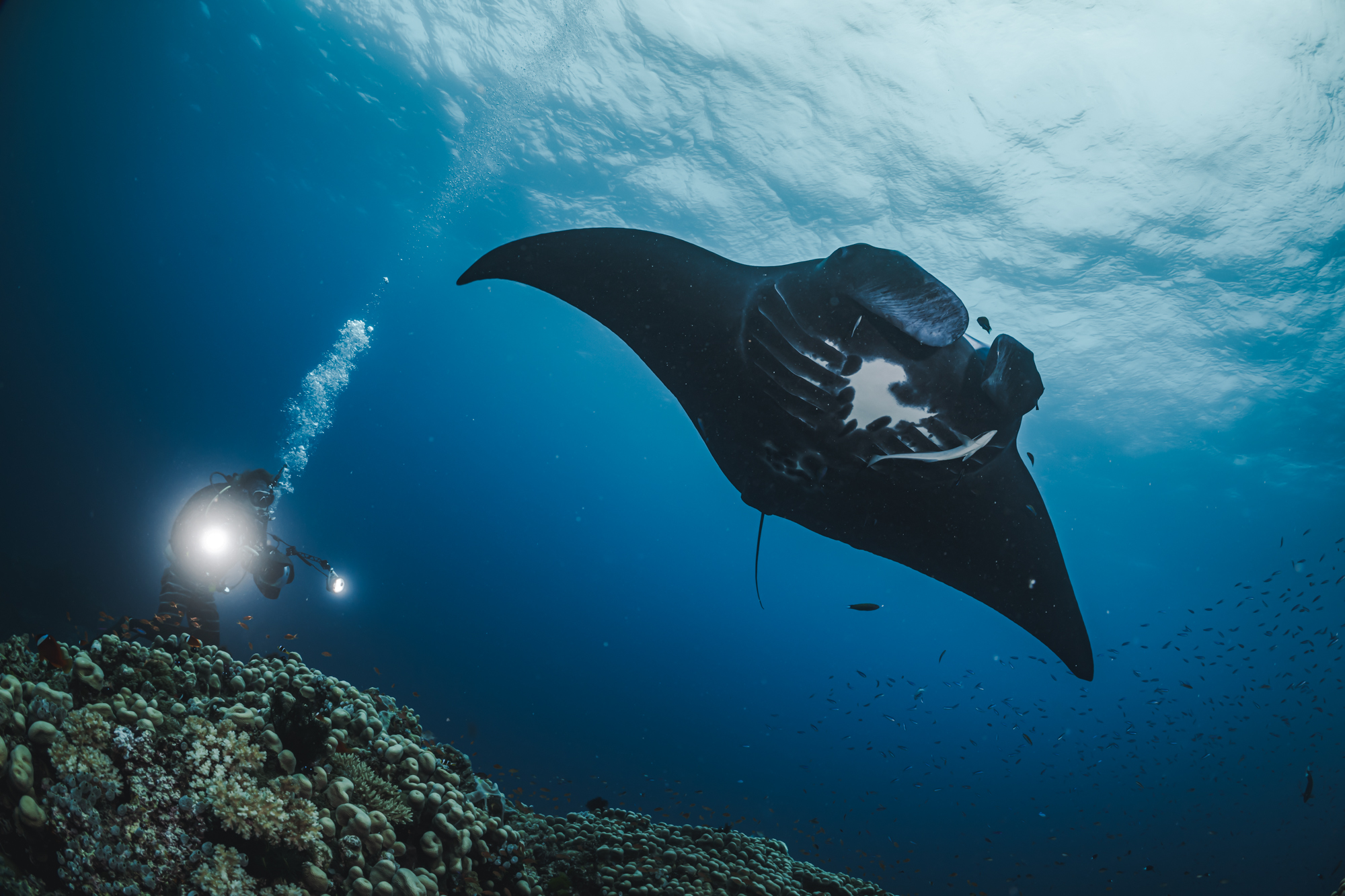It’s commonly assumed that deaf people, or hard-of-hearing people, cannot scuba dive. It’s an assumption that is made because many people think that someone who can’t hear won’t be able to equalize – but that’s not always the case. People can lose their hearing for multiple reasons, and not all of them prevent an individual from being able to equalize their airspaces.
If you, or someone you know, has a hearing issue but would like to try scuba diving, the first step is to check with your medical practitioner (audiologist/ENT specialist). If you can equalize – then the chances are that you are fit to dive!
Once you are medically cleared for diving, then you are ready to embark on an exciting underwater adventure!
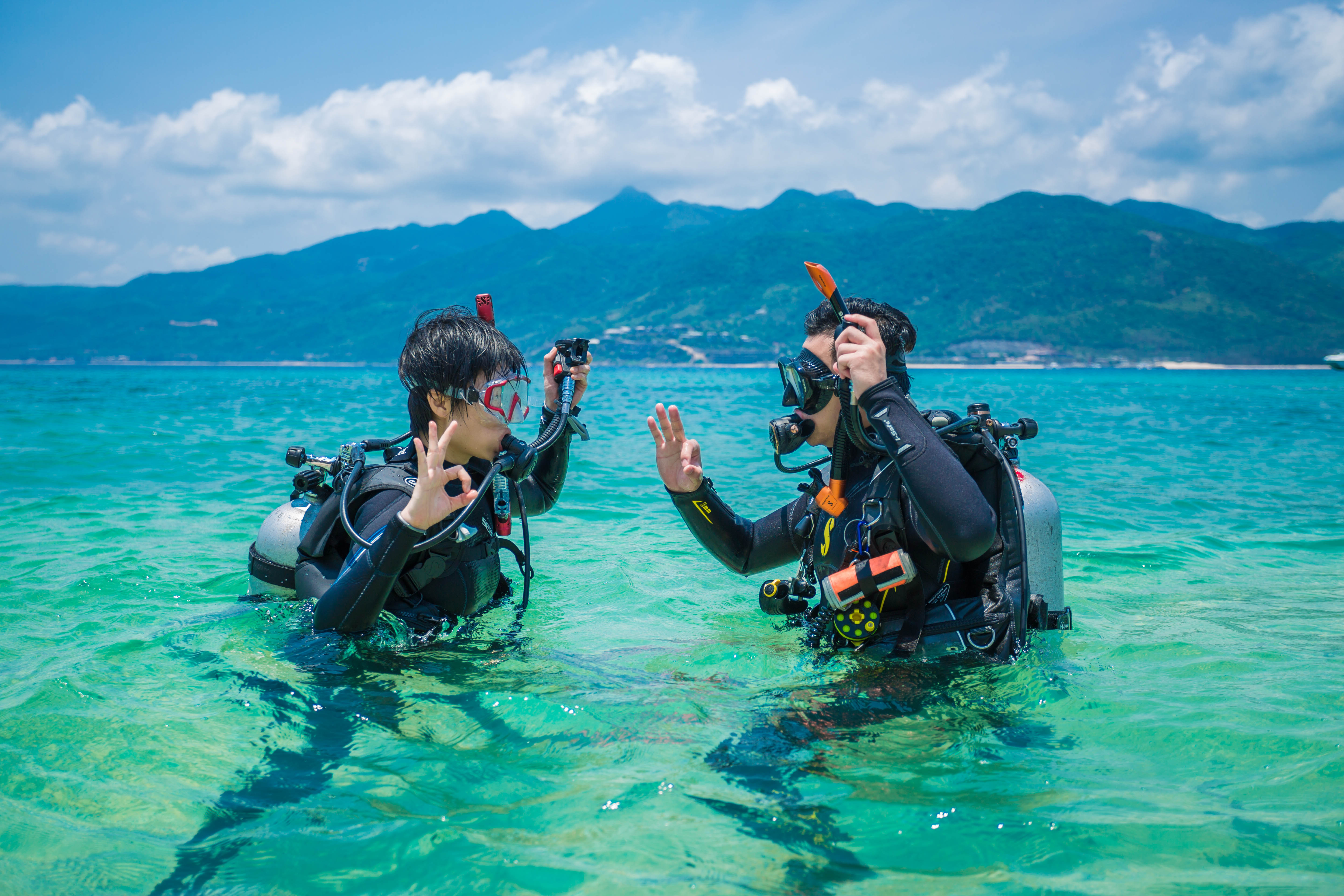
When asking the question, can deaf people scuba dive? There are undoubtedly some differences in how deaf people experience the underwater world, but differences aren’t automatically negative. In many ways, deaf people are much better prepared to deal with underwater adventure than those who can hear.
Learning to Dive when Deaf or Hard of Hearing
For those who are deaf (and from here-on in, we include in the term ‘deaf,’ those who are hard of hearing, late deafened, and other subgroups of the deaf population), there are some different needs that need to be catered for when learning to dive. An Instructor who can communicate in sign language is definitely a bonus when taking the Open Water Course. Reading material and/or videos with subtitles (such as those found in PADI eLearning options) are essential.
It’s also important to note that while some deaf people understand sign language but speak in response, others may not, so they will need to communicate entirely on sign language. Others will lip-read, so it’s important that instructors are always signing or speaking in view of the person so that they can understand fully. Because most diving Instructors are hearing, an ASL (American Sign Language) interpreter may be needed to assist with delivering the theory components of the course.
Once underwater, however, a deaf person is on the same playing field as a hearing diver, relying on underwater hand signals to communicate. If the instructor can sign underwater, a deaf diving student has a great advantage over a hearing student. Through sign language, an instructor and student can fully communicate underwater as they would on the surface without being limited to the standard scuba diving hand signals that are universally used by hearing divers worldwide.

Dive and Boat Briefings
Divers know how important clear boat and dive site briefings are. This is when the Divemaster, Guide, or Instructor relay important information to their divers and students. Information varies according to conditions, but it will usually include entry and exit procedures, dive profiles – depths and times, and a site description. Other information included may relate to the topography, currents, conditions, potential hazards, and marine life to look out for.
All of this can be delivered effectively to a deaf diver through sign language – or an ASL translator. If those options are not available, a whiteboard is an amazing tool! Dive profiles and site maps can be sketched out and the dive’s key points can be noted. Boat briefings tend to be the same day in and day out and can be printed and laminated for anyone (deaf or hearing) to read through and understand.
Although deaf divers need to be catered for differently, this should not bar them from having great diving experiences! So when asked, can deaf people scuba dive, we say YES!
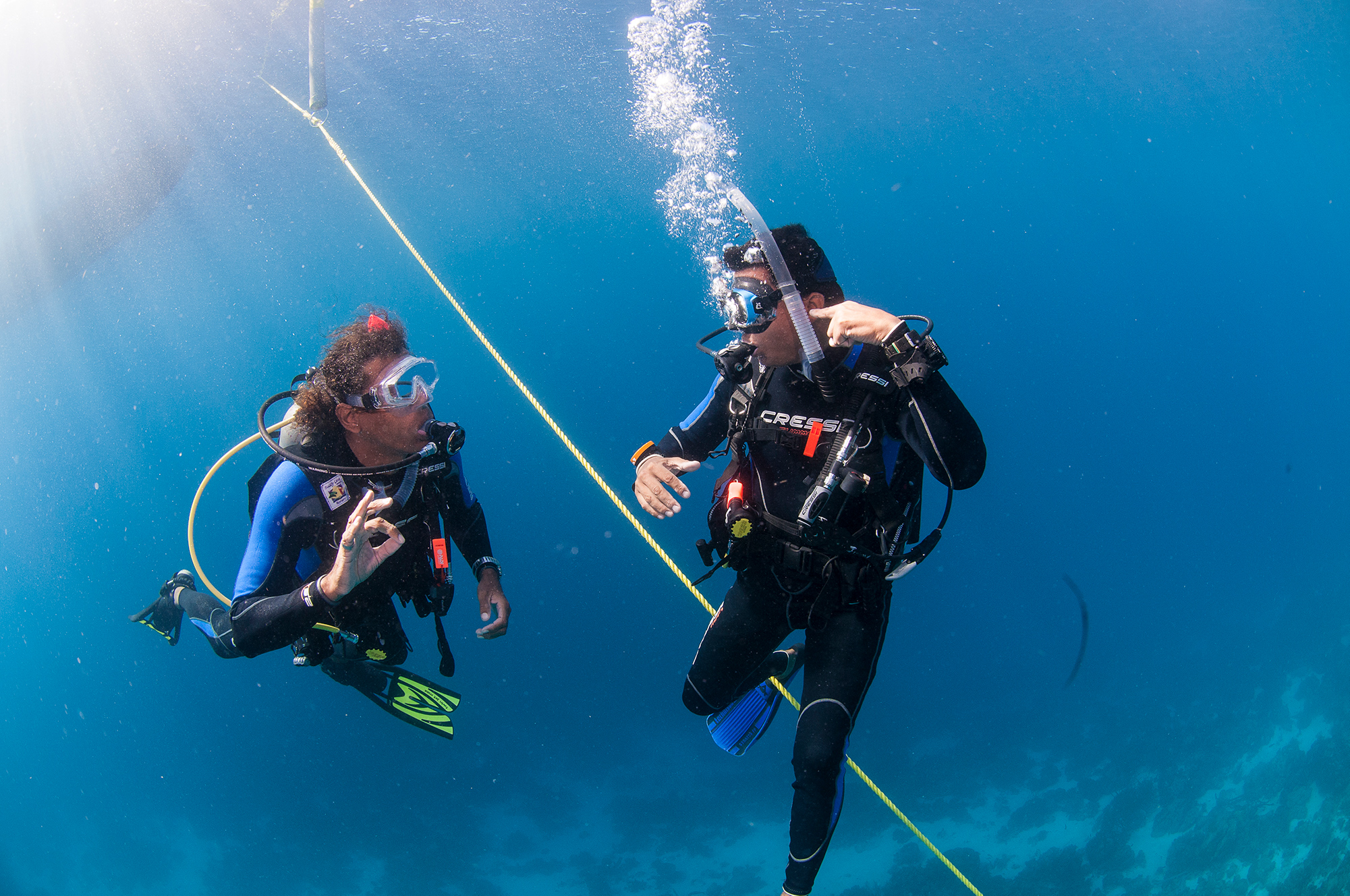
Open Water Dives
It’s not uncommon for deaf people to have a deaf dive buddy – for example, a husband and wife who communicate in sign language daily. For them, while underwater, they can communicate as normal without the restrictions of using only scuba diving hand signals. Some deaf people, however, also want the meditative experience enjoyed by hearing divers and will only use underwater diving signals.
While fully conversing underwater is an advantage, it’s important to note that one potential hazard that deaf people face is not being able to hear boat traffic on the surface. It is therefore recommended to opt for dive sites with lower or no boat traffic – such as house reefs and shore dives. Another solution is to dive with a hearing guide. Ensure you use a surface marker buoy that can be deployed from below the surface. When surfacing, keep looking up and around at all times. Once on the surface, stay together as a group. A group of divers is easier for a boat to see than individual divers.
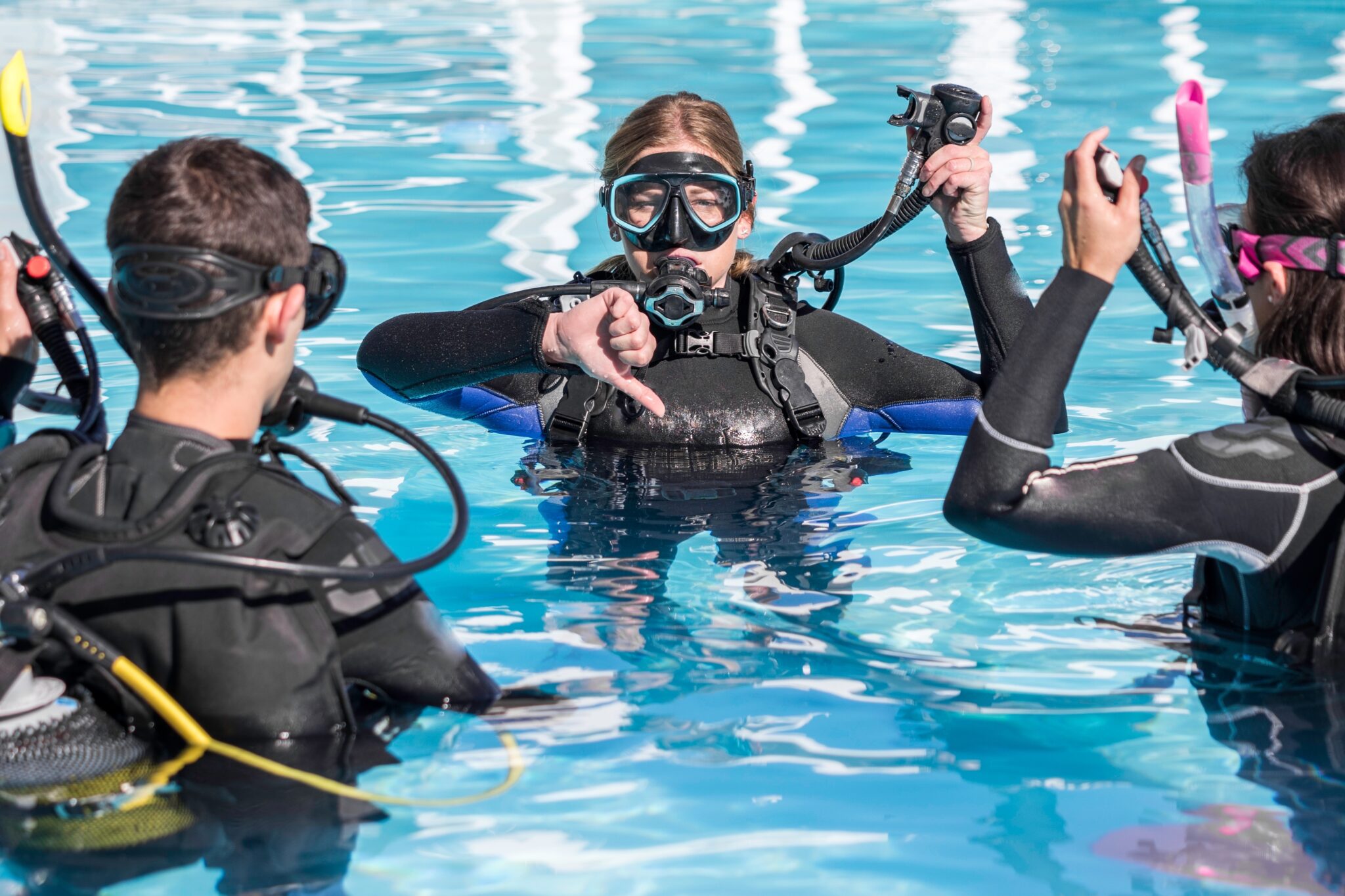
Choosing a Dive Shop
While there is an increasing number of dive shops with deaf owners and/or instructors, they cannot be found everywhere. When selecting a dive shop, inform them about your condition, needs, and requirements. Have a frank conversation with them about if they will be able to cater to you and how.
Choose the shop that gives you the best solutions according to your needs. Let them know the solutions suggested in this Blog. For example, ask them if they have a whiteboard that can be taken on the boat to draw out the dive site and make notes about the dive plan and conditions.
Ask the instructor if they can take an underwater slate and pencil with them on all dives and pool sessions. This can also be used on the surface to communicate before and after the dive or in between skills in the pool.
Learn More?
If you are interested to learn more about the reality of learning to dive as a deaf person, check out the story of a father and deaf daughter learning to dive in this edition of the PADI Blog here!
Start Planning
If you are ready to start reaching out to dive centers and planning your diving adventures, check out dive centers, resorts, and liveaboards worldwide on PADI Travel.


